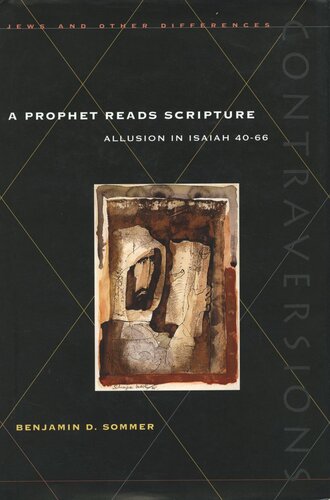

Most ebook files are in PDF format, so you can easily read them using various software such as Foxit Reader or directly on the Google Chrome browser.
Some ebook files are released by publishers in other formats such as .awz, .mobi, .epub, .fb2, etc. You may need to install specific software to read these formats on mobile/PC, such as Calibre.
Please read the tutorial at this link: https://ebookbell.com/faq
We offer FREE conversion to the popular formats you request; however, this may take some time. Therefore, right after payment, please email us, and we will try to provide the service as quickly as possible.
For some exceptional file formats or broken links (if any), please refrain from opening any disputes. Instead, email us first, and we will try to assist within a maximum of 6 hours.
EbookBell Team

4.3
88 reviewsThis book examines the use of older biblical texts in Isaiah 40-66, notably the writings attributed to Deutero-Isaiah. Its discussion of allusions, influence, and intertextuality generates significant questions for both biblicists and literary critics: Why do authors allude? How does the presence of older material in a text affect readers? How can critics identify genuine cases of allusion? Are contemporary theories of intertextuality applicable to ancient texts? The author defends the controversial historical questions asked by scholars of inner-biblical exegesis, modifying some of the dominant (and, in some ways, misleading) categories other biblical scholars have created. In sum, the book aims to refine the study of inner-biblical exegesis through an extensive examination of the use of older texts in one corpus. The redactional complexity of the Book of Isaiah has rendered it central to discussions of canon formation and the final shaping of biblical material. The author demonstrates that Deutero-Isaiah situated himself in a wide stream of tradition by no means limited to an Isaianic school, and that his most important literary precursor was not First Isaiah but Jeremiah. This finding necessitates a trenchant reappraisal of recent work on the unity of the Book of Isaiah. Further, the author shows that the strikingly consistent poetics of allusion running throughout all of Isaiah 40-66 testifies to the coherence of those chapters as a single corpus, arguing against multiple authorship. Close readings of the use of borrowed material in Isaiah 40-66 sharpen our appreciation of Deutero-Isaiah’s originality and artistry, highlighting his attempts to convince Judean exiles that God had neither abandoned nor failed them. The prophet’s heavy dependence on earlier prophets illuminates the changes classical Israelite prophecy underwent in the Babylonian exile. These changes led to the disappearance of prophecy and the rise of exegetical forms of religious expression known from Qumran, early Christianity, and rabbinic Judaism.